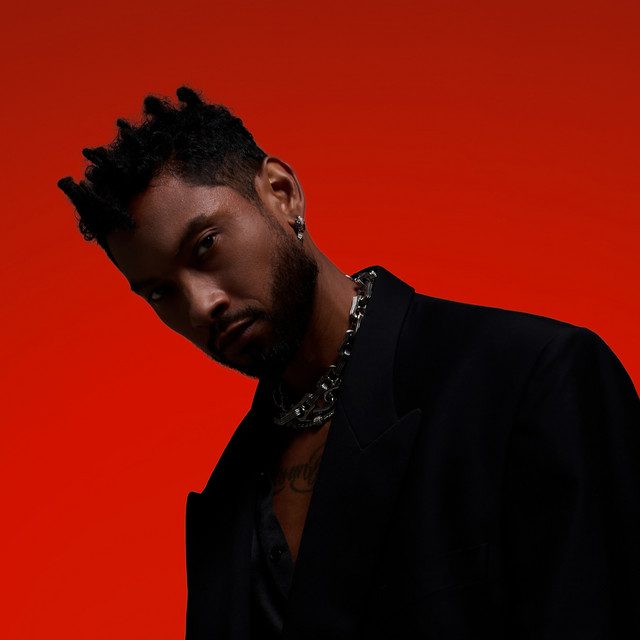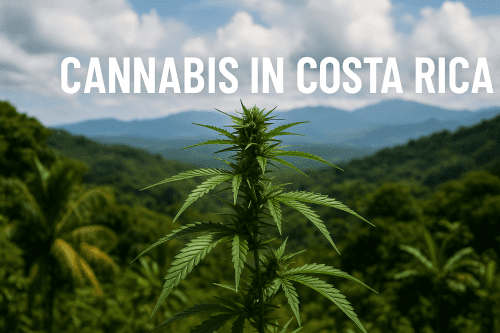The story of the Grammy-winning singer known as Miguel begins in San Pedro, Los Angeles, a harbor community that doesn’t get the glamour treatment when people talk about LA. San Pedro is rough around the edges, culturally stacked, musically unpredictable, and full of the kind of real-life texture that ends up shaping a person long before they ever step into a studio.
It’s the kind of neighborhood where you might hear rock blasting from one house, soul from the next, banda out of a parked car, and some kid skating down the street with headphones full of early 2000s R&B. That environment made Miguel, formally known as Miguel Jontel Pimentel, who he is. San Pedro didn’t teach him to choose a lane, it taught him to treat all of them like ingredients.
Growing up in a mixed Mexican and African-American household, he soaked up culture from every angle. His heritage is reflected in his tone, his identity, his storytelling, and the way he blends genres without overthinking the boundaries. The neighborhood gave him grit. His family gave him duality. And the music he absorbed gave him permission to become something that didn’t fit neatly into any category.
Miguel Makes It Big
By the time he first hit the mainstream, his sound already felt like it came from multiple worlds at once. His early success — “Adorn,” “Sure Thing,” “Do You…,” “Sky Walker,” “How Many Drinks?”, introduced a voice that could be tender, explosive, atmospheric, and hypnotic all in the same song.
He didn’t sound like anyone else in R&B, and he didn’t move like someone who wanted to. Miguel emerged during a moment when the genre was splitting between traditional R&B and a rising alternative wave, but instead of choosing one, he stood right in the middle and stretched both sides to match what he was hearing in his head.
People often ask what genre his music is, and the real answer is that he’s not built for one. He moves through R&B, soul, alt-rock, funk, psychedelic textures, experimental edges, and pop sensibility without ever fully belonging to any single sound.
The industry labeled him alternative R&B because they didn’t know what else to call him, but Miguel was always working outside the rules. His sound is defined by emotion, experimentation, stacked harmonies, textured arrangements, sensual writing that cuts deeper than the surface, and a vocal style that can go from velvet to razor without warning.
He sings like someone letting you into something personal even when the production around him is loud or distorted.
Part of the reason he is so respected is because his music has always felt lived-in. You can hear experience in his voice, confidence, vulnerability, heartbreak, reflection, desire, tension, and a kind of internal searching that became more pronounced as he grew older.
His catalog is a timeline of a man evolving in public.
Early albums carried a cleaner, smoother version of him. Later projects explored darker colors, heavier emotions, and bold sonic choices most artists wouldn’t dare try while sitting in the mainstream.
Miguel never tried to recreate his classic moments.
He never tried to chase the high of “Adorn.”
He never let the industry freeze him in the version of himself that fans met first. Instead, he leaned into whatever phase of life he was in, growth, chaos, expansion, pain, clarity, and let that dictate the sound.
That is why his music never feels recycled. The evolution is the through-line.
His influence reaches far beyond the radio hits. A whole wave of atmospheric, moody, genre-blending R&B artists came up in his wake. The emotional freedom, the edgy production, the experimental blending of rock textures with R&B vocals, Miguel helped normalize all of that.
Before it became the aesthetic, he was already living it. And while younger artists imitate the vibe, he continues to push the substance.
Fans searching for who Miguel is today will find an artist who refuses to shrink himself for comfort. He’s still creating, recently releasing an album called CAOs, still performing, still releasing music that reflects where he is now rather than where he used to be.
His recent era leans deeper into raw emotion and experimentation, showing a version of Miguel who isn’t afraid of the darker corners or the imperfect moments.
He sings with a voice that feels more seasoned, more layered, and more human than ever.
People who discover him through his biggest hits often ask what defines him now.
The answer is simple: he’s grown.
He’s more honest.
More complex.
More experimental.
The music carries weight because he’s lived enough life to understand that beauty and chaos can exist in the same moment. His artistry reflects someone who isn’t performing romance or emotion, he’s telling the truth of what love, loss, desire, and transformation actually feel like.
His legacy continues to take shape in real time. He’s not the kind of artist you can sum up with a discography or a genre label. He’s someone whose identity as a singer, songwriter, producer, performer, and creative thinker has always been built on movement.
His voice remains one of the most unique in modern music. His influence continues to show up in new artists everywhere. And his evolution proves that staying authentic, even when the path gets messy, is the reason he still matters.
Miguel is San Pedro in spirit, layered, gritty, soulful, unpredictable, emotional, and always shifting. He is a product of the harbor, of culture, of dual identity, of real experience, and of the kind of creativity that doesn’t quiet down just because the world wants something simple.
If you want to understand who Miguel is, understand this: he is an artist who has never stayed where you left him. His music grows because he grows. His sound changes because he changes. And the truth he’s willing to express, through every phase, every album, every reinvention, is what makes him one of the most important modern artists of his generation.
Miguel isn’t defined by the past.
He’s defined by motion. And that’s why he remains a presence in culture with no expiration date.
Miguel FAQ: Everything Fans Want to Know
Where is Miguel from?
Miguel is from San Pedro, Los Angeles, a harbor community known for its grit, multicultural identity, and raw artistic influence. Growing up in San Pedro shaped the way he blends genres and carries emotion into every part of his sound.
What is Miguel’s background?
Miguel is of Mexican and African-American heritage. His dual identity and family background play a major role in his creative expression, vocal style, and the emotional depth of his writing.
What genre is Miguel considered?
Miguel never fits into just one space. People often categorize him as alternative R&B, but his music moves through soul, rock, psychedelic textures, experimental production, and atmospheric pop. His sound follows emotion rather than rules.
Why is Miguel an important artist?
Miguel helped push R&B into a new era by blending emotional vulnerability with creative risk. His influence can be heard across today’s moody, genre-blurring R&B landscape. He made space for artists who don’t want to choose between intimacy and experimentation.
What are Miguel’s biggest songs?
“Adorn,” “Sure Thing,” “Sky Walker,” “Do You…,” “Quickie,” “Coffee,” and “How Many Drinks?” are among his most well-known records. These songs highlight the range of his talent, from sensual slow-burns to expansive, atmospheric anthems.
What albums define Miguel’s evolution?
Miguel’s albums such as All I Want Is You, Kaleidoscope Dream, Wildheart, and War & Leisure capture different chapters of his growth. His later work — including the raw, experimental direction heard on CAOS — shows an artist still stretching himself creatively.
Is Miguel still making music today?
Yes. Miguel continues to create, record, and perform. His recent era, grounded in personal exploration and sonic risk-taking, shows that he’s not an artist who settles into one phase. He evolves with each project.
How has Miguel’s sound changed over time?
Miguel’s early music had a smoother, classic R&B energy. Over the years, his sound became more layered, emotional, and experimental. Today his music carries more texture, distortion, introspection, and atmosphere. CAOS is a perfect example of how he uses emotion to drive the sound instead of following a formula.
What makes Miguel different from other R&B artists?
Miguel creates from instinct and honesty rather than trends. His music isn’t designed for playlists — it’s designed for expression. The beauty, the chaos, the imperfections, and the emotional weight in his voice set him apart in a genre that often leans toward polish.
What influences Miguel’s artistry?
His upbringing in San Pedro, his multicultural background, his love of rock and soul, the emotional intensity in his personal life, and his desire to grow creatively all influence the way he writes and performs.
Why does Miguel’s voice stand out so much?
Miguel has one of the most distinctive voices in contemporary music. His delivery can shift from soft and intimate to sharp and powerful in the same line. The way he stacks harmonies, uses texture, and leans into emotion makes his vocals instantly recognizable.
What is Miguel doing now?
Miguel continues to release new music and evolve artistically. The version of him today, reflected in the experimental energy surrounding CAOS and his current creative direction, shows an artist fully committed to truth over predictability.







